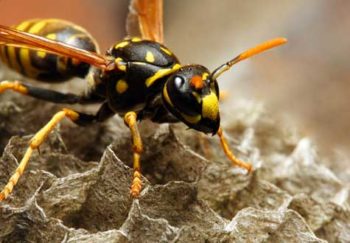
If you or your child suffer from asthma, it’s important to be aware that some common triggers for asthma may be circulating within your own home. Dust mites, dog, cat, mouse, mold and even cockroaches can compromise home air quality. Not to mention all of the man-made chemicals we introduce into our environment, such as cleaning products and tobacco smoke.
“Decreasing exposure to these triggers is key for asthmatics,” says allergist Thomas A. Platts-Mills, MD, head of the Division of Allergy and Clinical Immunology at UVA School of Medicine.
Platts-Mills has spent decades studying the causes of asthma and allergic diseases. One of the many takeaways from his research is that proteins from some common household pests can exacerbate asthma symptoms, including wheezing, shortness of breath and chest tightness. Clearing the air may help reduce these symptoms and cut down on the number of medications required to keep your child breathing normally.
Here are some tips for improving your home’s air quality and protecting asthma sufferers.
Improving Home Air Quality: 7 Tips
Opt for Hardwoods
Wall-to-wall carpet may be soft underfoot, but it can be a breeding ground for dust mites. These are tiny, insect-like creatures closely related to ticks and spiders that are impossible to see with the naked eye.
The most prominent indoor allergen in the southern United States, thousands of dust mites may inhabit the average home. They’re most common in carpeted floors, where they feed on skin scales from humans and pets that accumulate. Although unpleasant, dust mites are harmless for the most part unless, of course, you are allergic to the proteins they leave behind.
If you do have carpeting, vacuum regularly. However, be sure allergy sufferers are out of the home. Vacuuming disrupts dust mite debris and other allergens like pet dander and causes them to become airborne. This is when they are most problematic because you’re more likely to breathe them in. “Cat particles in particular are smaller and tend to stay airborne longer,” says Platts-Mills.
Protect Pillows and Mattresses
Another favorite spot for dust mites and pet allergens to accumulate is in pillows and mattresses. Wash sheets, covers and pillowcases regularly in hot water to eliminate any existing particles. Allergy control covers also do a good job of keeping bedding free of dust mites. For more tips on controlling dust mites, visit the Asthma and Allergy Foundation of America.
Is Your Child Allergic?
Contact our allergists to get an allergy skin test.
Turn On the AC
Central air conditioning keeps homes cool and dry, which helps prevent the growth of mold and limits dust mites. Use a HEPA (high-efficiency particulate filter) filter to trap particles already within the home, but be sure to change the filter regularly.
Reduce Humidity
Dust mites and mold thrive in an environment that is above 50 percent humidity. Be sure to remove any water-damaged areas within the home promptly to prevent mold growth. Use a dehumidifier regularly to reduce moisture levels within the home.
Purify the Air
Air purifiers with a HEPA filter can help rid the air of allergens in your home. However, it’s important to use them correctly.
“If you place an air purifier by the carpet, you’re just going to blow particles throughout the house,” says Platts-Mills. “It’s best to place air purifiers off the floor or on a hard surface.”
Mind Your Pets
Depending on the severity of your child’s pet allergy, you may be able to own a dog or cat if you keep personal spaces as free as possible from pet dander. Don’t allow pets to sleep in bedrooms where your family spends a majority of their time. Bathe pets often and brush them regularly outdoors.
Limit Chemicals and Exposure to Secondhand Smoke
The fumes from household cleaners and secondhand smoke can aggravate the airways and trigger asthma symptoms just like some of the allergens mentioned above.
“It’s not unreasonable to keep the bulk of household cleaners in a space outside the normal family space and remove the child from home when cleaning if possible,” says Platts-Mills. And children should never be exposed to secondhand smoke.

